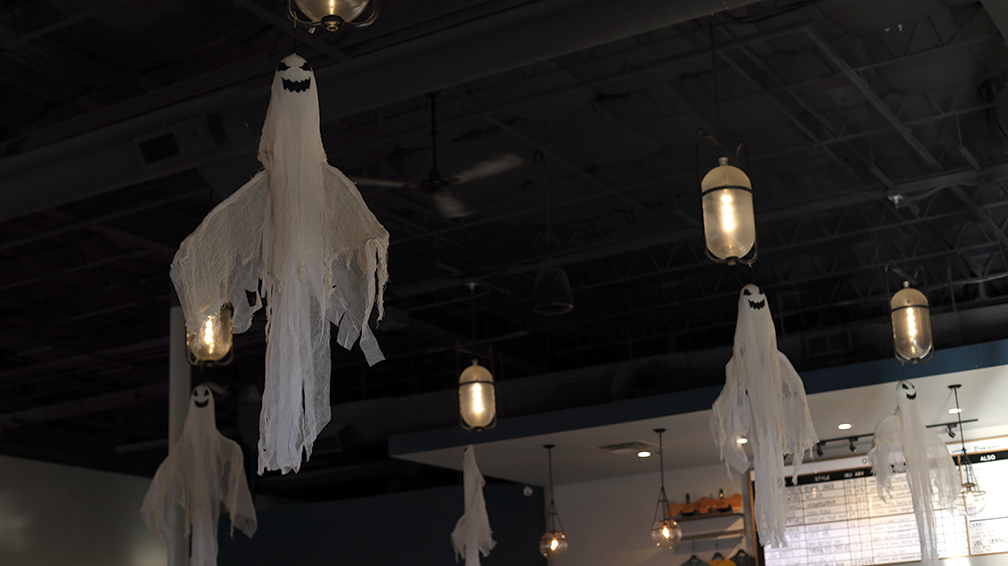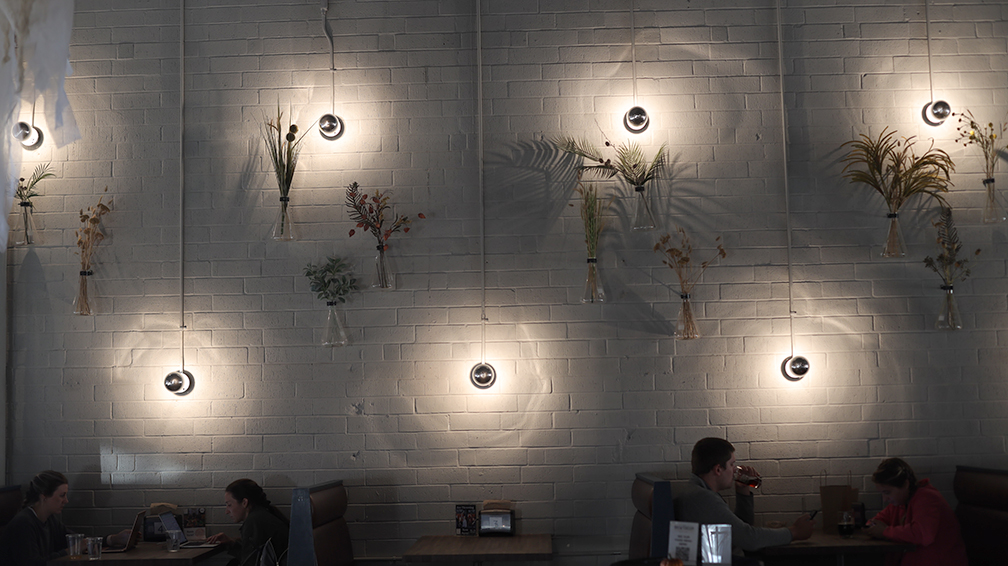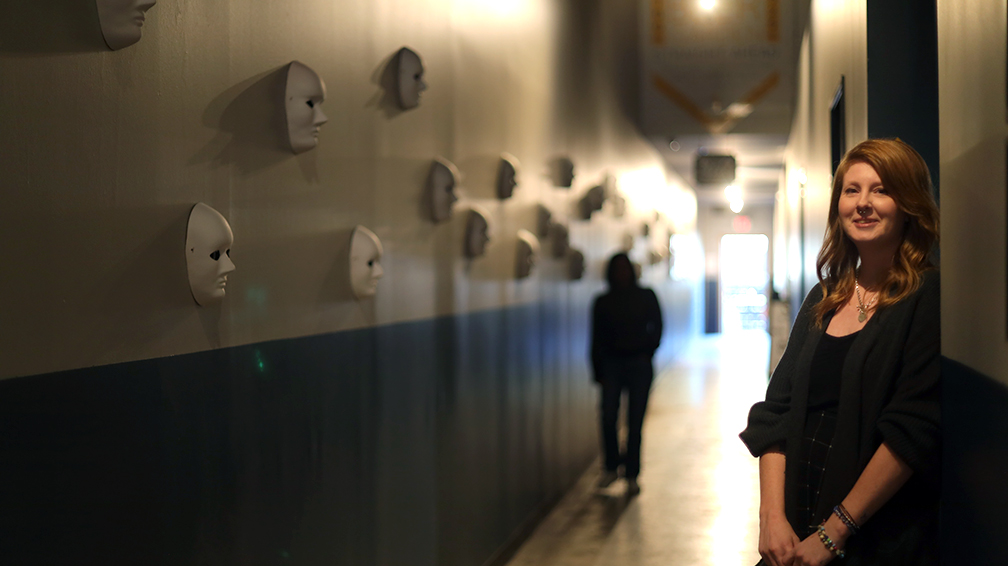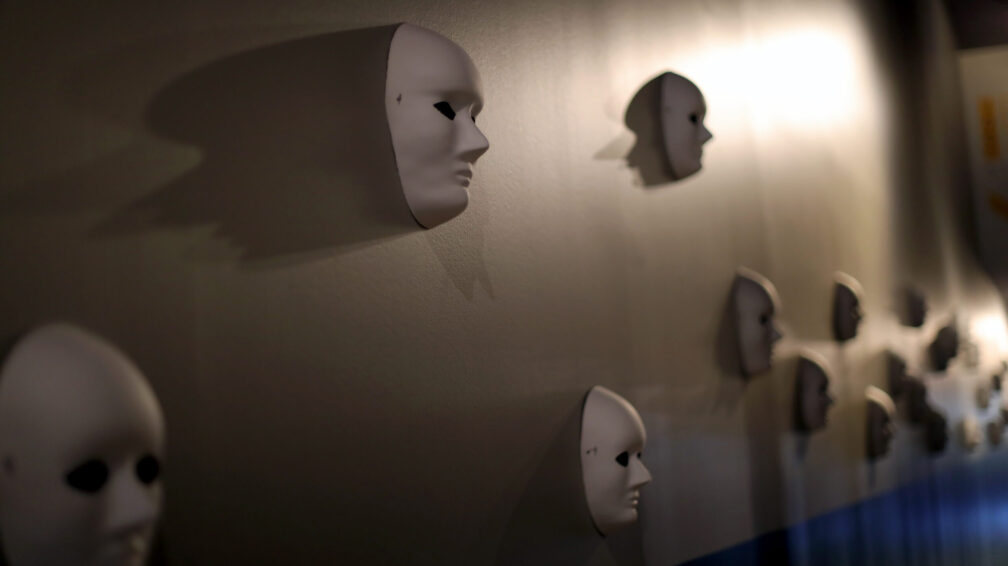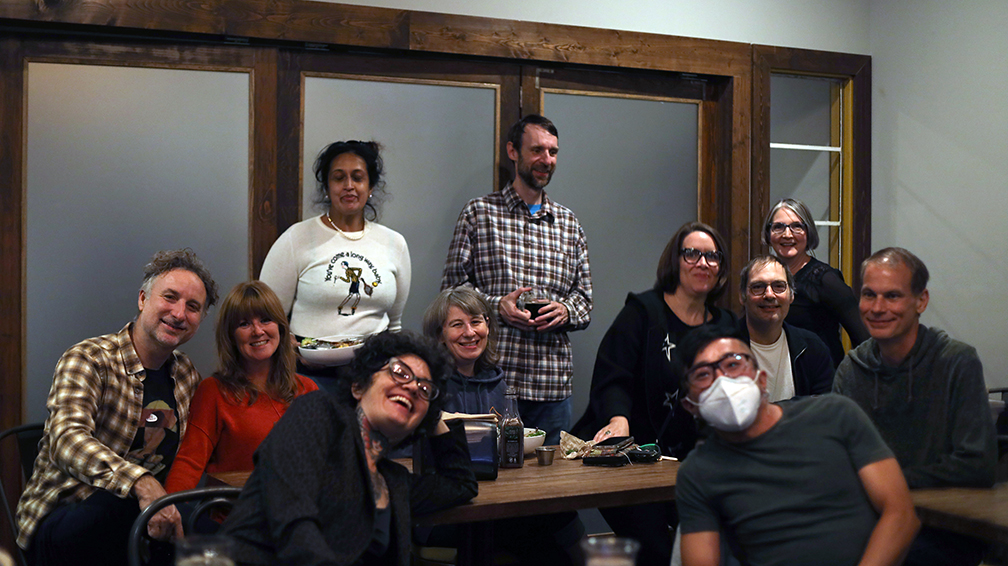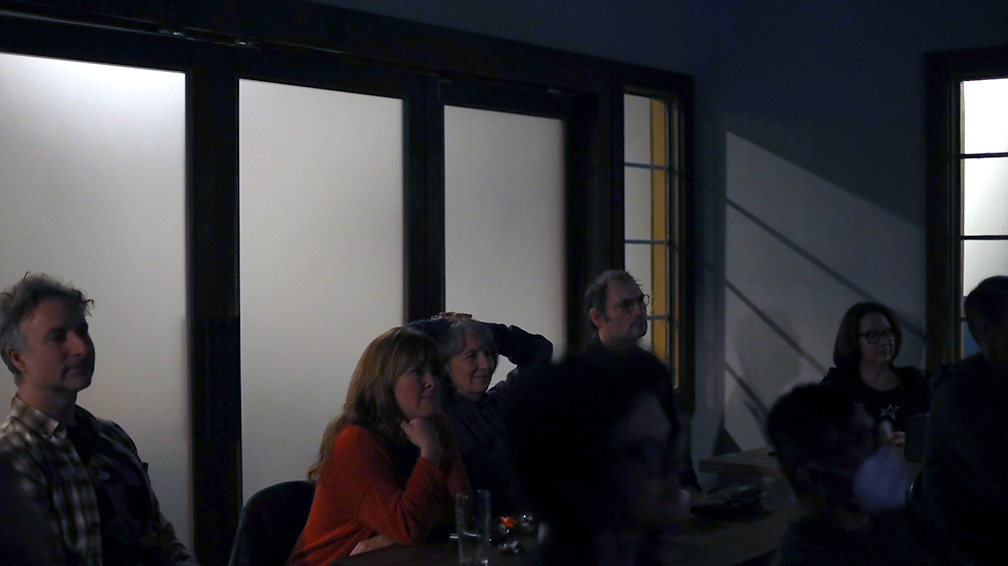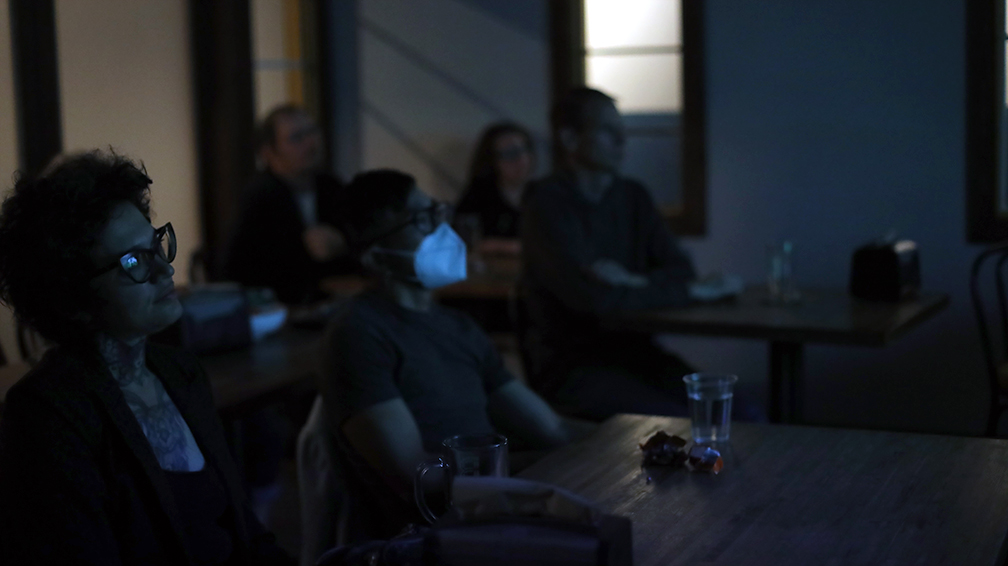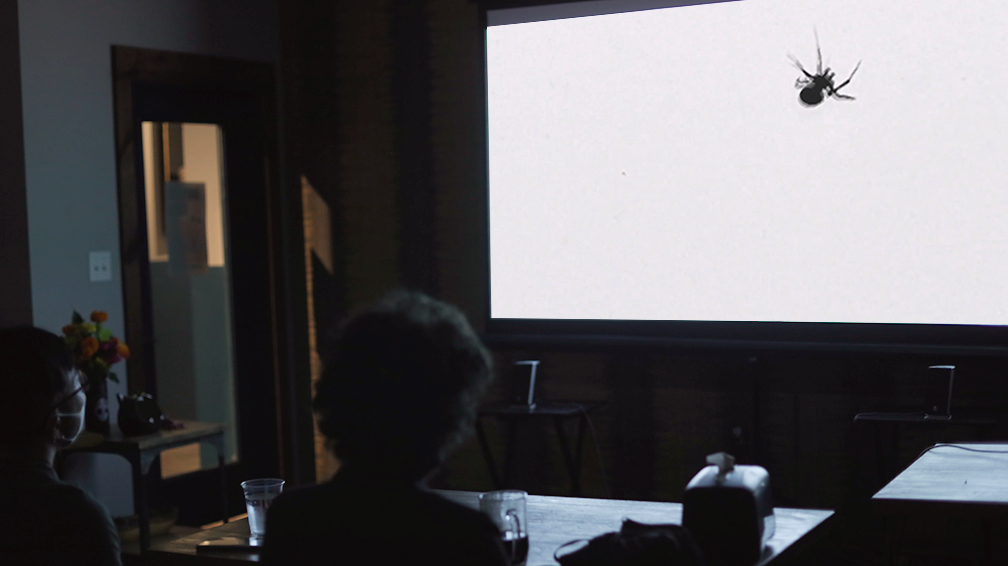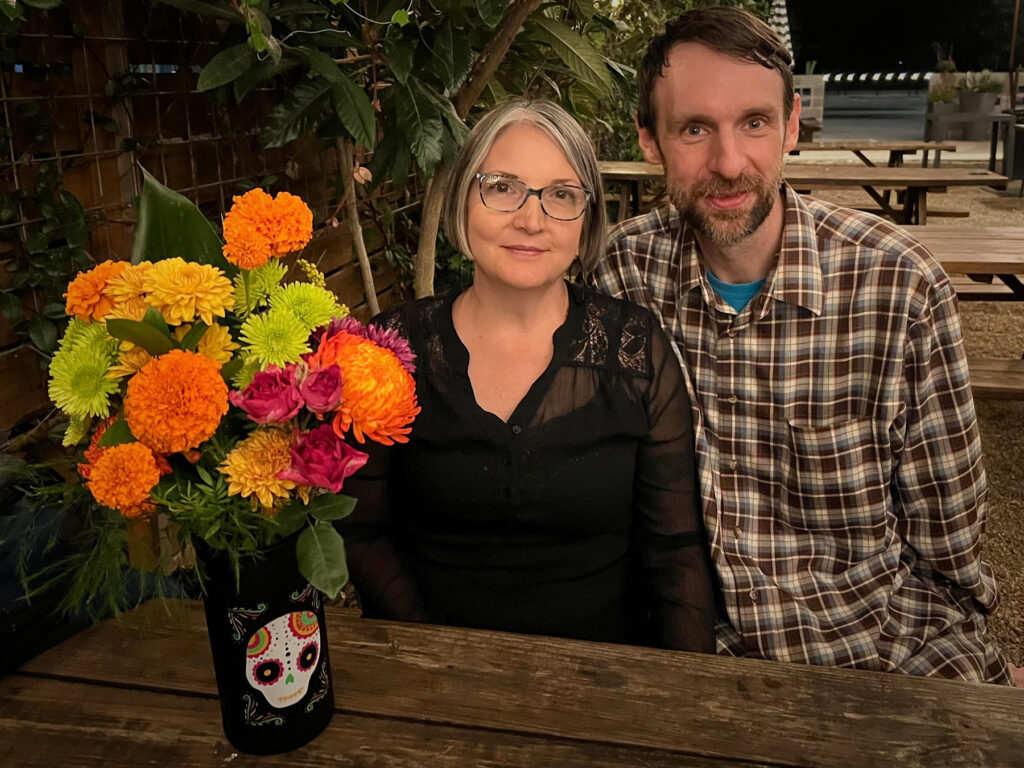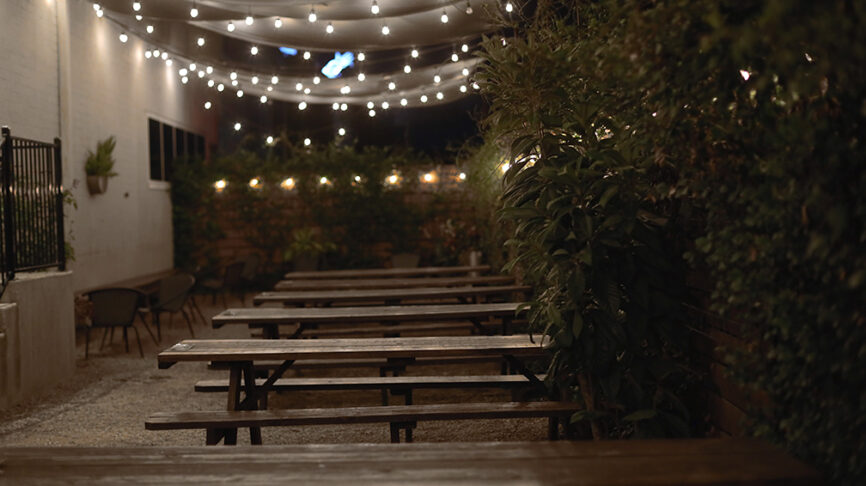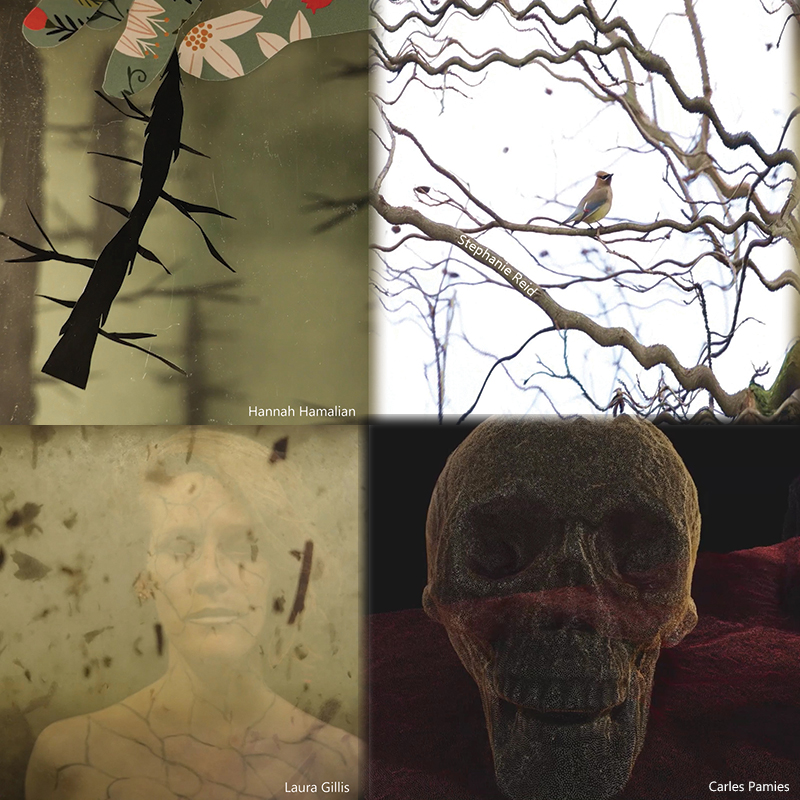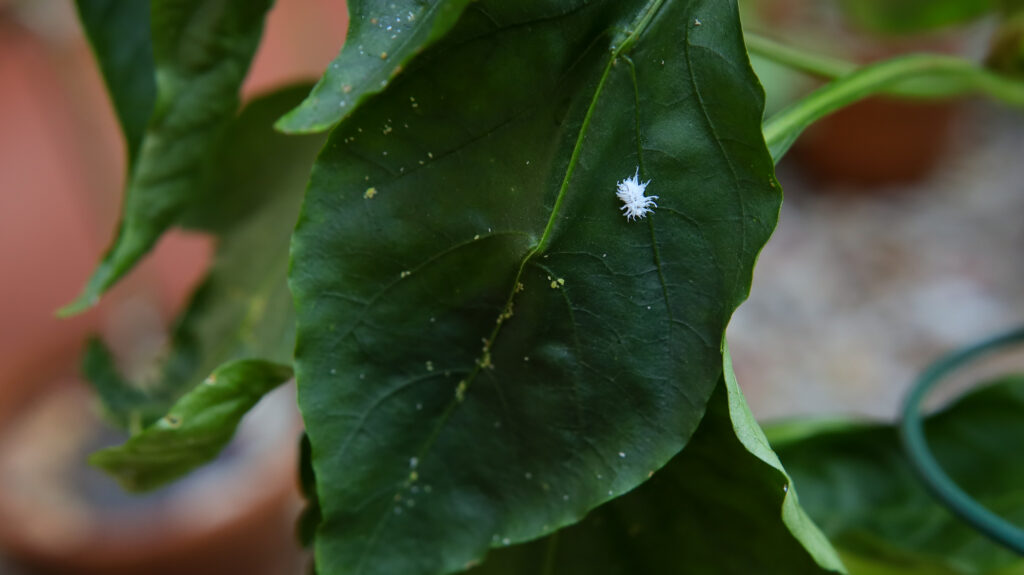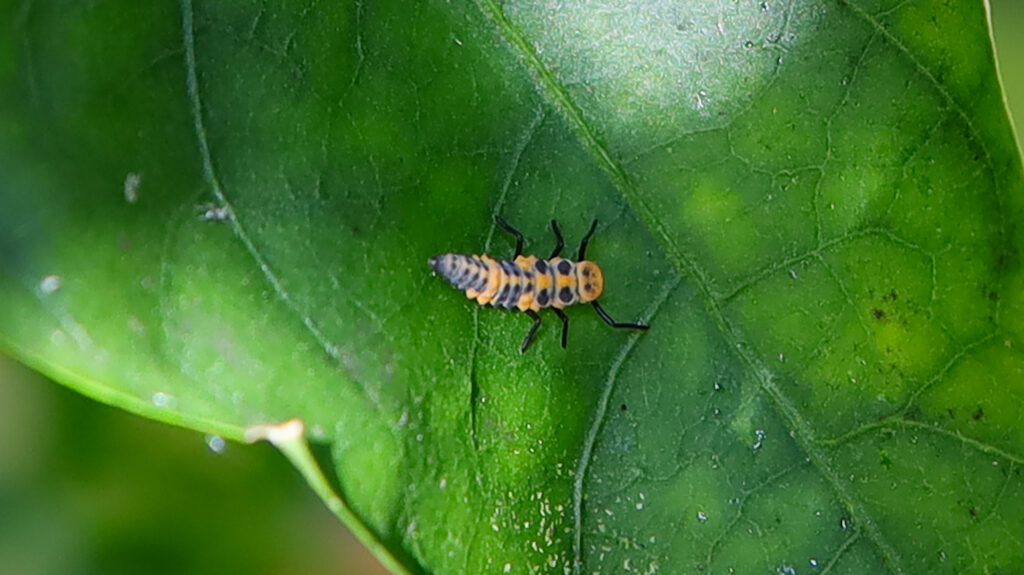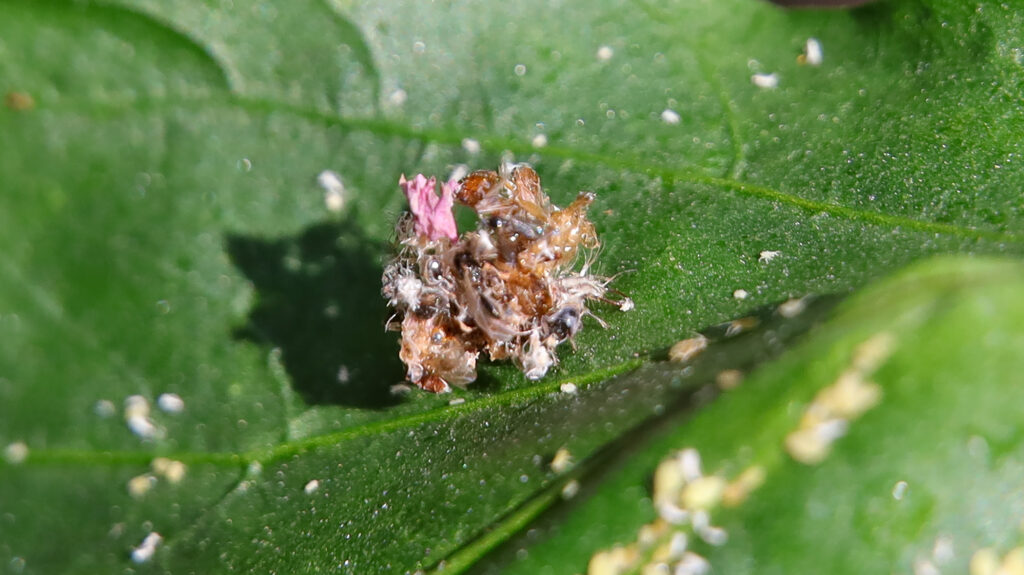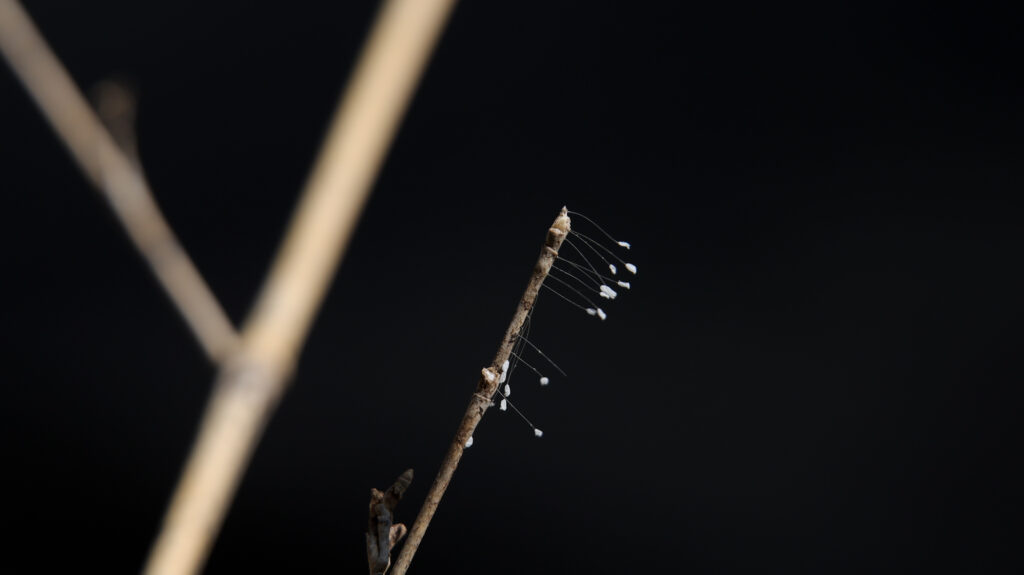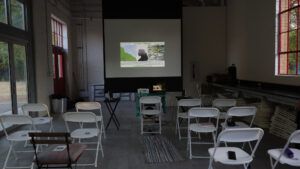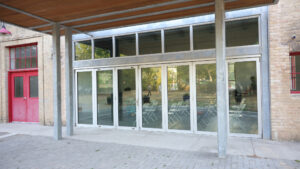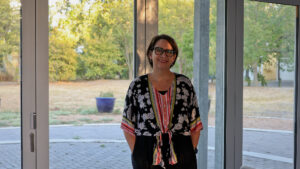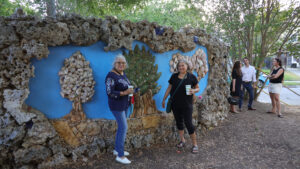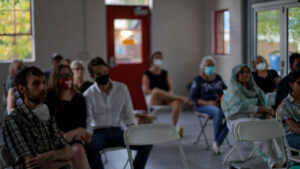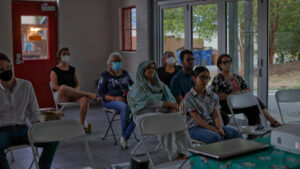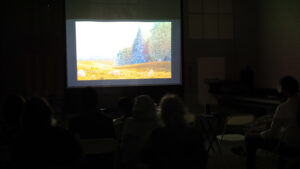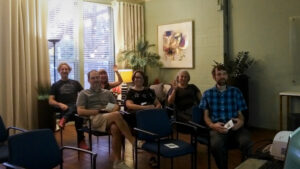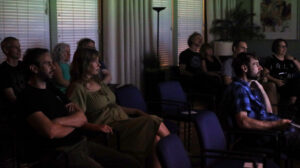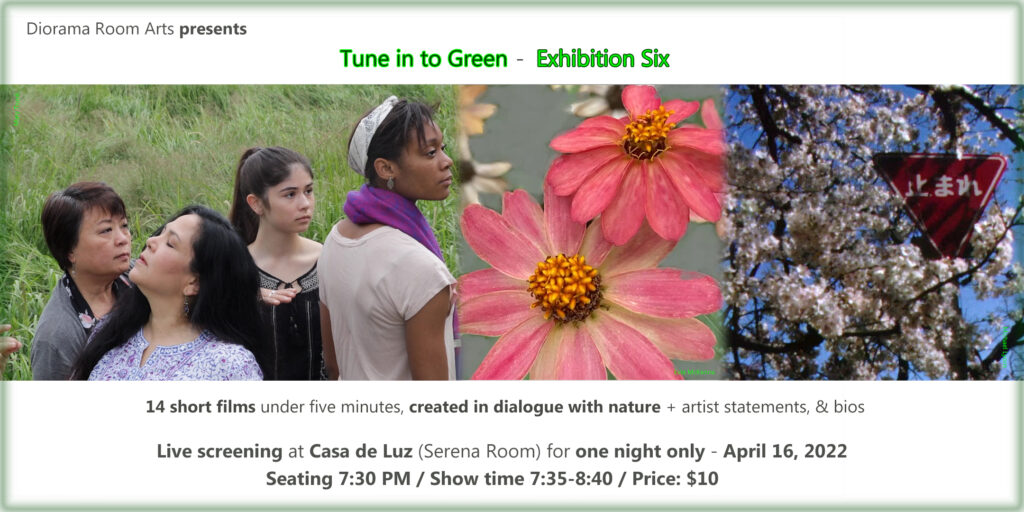On November 20, 2022, a few of the artists with films in Tune in to Green, Minor Chord 2, which ran from September 2-December 2, 2022, met for a virtual conversation about our films, current projects, and environmental topics. Alexandre Ries (pronounced: Reece) joined from Northern France, Tess Elliot joined from Norman, OK and Claudine Metrick joined from New York state. I didn’t post the video this time because it contains future work by Alexandre and he may prefer that I don’t share it publicly. Instead, a synopsis of our talk follows.
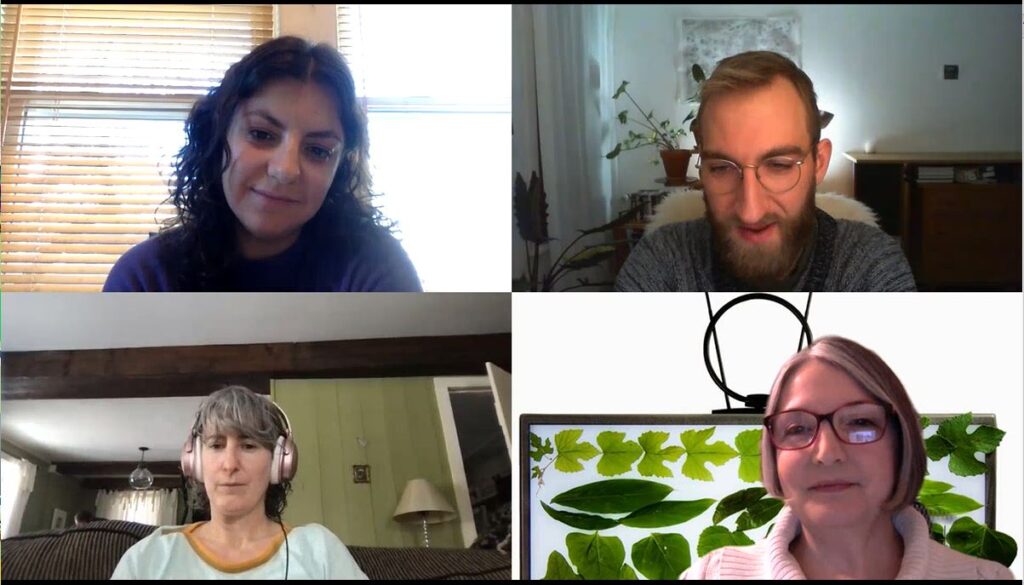
Tess talked about how Super 8mm film, 77 Genesee Bay Boulevard, in which she documents the destruction of a residential property including a 150-year-old Long Island Elm tree, is a plea to protect trees. By using black and white film stock she is able to appeal to nostalgia through the gritty silver grains and less than tack sharp focus. It is a call to consider what we value in our decisions for land use and domestic space. It was surprising to hear that the owners were unable to sell the property for years until they finally gave up and sold it to a family who wanted a massive house that covers the whole property, including the space where the tree was. She mentioned that like I touched upon in my film, Elegy in Dust, there were a lot of animals who were displaced from the tree.
We discussed local laws about cutting down trees. In Austin, Texas cutting down trees, even on private property, that are over 19 inches in diameter requires a permit and may not be granted. There is also a special HERITAGE TREE ordinance, for trees with a diameter of 24 inches or more, measured four and one-half feet above natural grade, and is one of the following species: (a) Texas Ash (b) Bald Cypress (c) American Elm (d) Cedar Elm, Cedar (e) Texas Madrone (f) Bigtooth Maple (g) All Oaks (h) Pecan (i) Arizona Walnut, and (j) Eastern Black Walnut. Only when serious issues such as disease or death of the tree arise may an approval be given by the Planning and Development Review Department to remove it.
Tess said that there is a movement in Norman that has urged the city council to protect the trees, especially when trees are severely cut back or removed all together, close to power lines, instead of trimming them judiciously.
Where Alexandre lives, in Northern France, there isn’t much nature, especially trees. There are fields between towns, but there isn’t an urban forest, which explains his practice of needing to go to remote areas to create. He goes far away from civilization so that he can have more spontaneous and immediate experiences with nature, where intellectual thinking falls away, you become more pragmatic and in tune with senses. He stays in national parks with tent, backpack, and catches ideas instinctively, no scripts or preconceived ideas lead his projects.
Claudine started a native plant garden at her home and observes the relationships between those host plants and the wildlife in the area. She has been enveloping her art practice in those observations through painting and stop motion animations of her paintings, like her film Wink featured in Minor Chord 2.
I mentioned have also enjoyed developing and intimacy with the land immediately near me, through gardening in the same space for the past five years of living at my current residence where there are a dozen trees of different types. I have never lived anywhere with this kind of landscape, so it is a new and wonderful experience. I have enjoyed watching all the different types of birds and learning what each kind likes to eat and their behaviors.
Tess moved into rental property recently and decided that for the first year she will let everything be without mowing it down or cutting it way. This has allowed her to observe and do research to learn about what was naturally occurring. There was a vine that her neighbor told her she could take out, but then she found out it was a native butterfly attractor related to milkweed. She laughed that she will probably get a fine from the city.
I asked if any of them had read The Overstory by Richard Powers. There is a couple in the book that do get tickets from the city for letting their yard become overgrown like a forest.
Tess recommended the book, The Dawn of Everything. She explained that it is a story that attempts to set the record straight on how human civilization evolved and elucidate how our current records are heavily biased. It presents the idea that agriculture didn’t necessarily lead to private property and inequalities, but instead for thousands of years existed as a community with small gardens based on relationship with cultivating plants and animals, until the idea to turn agriculture into a money-making machine took hold and lead to hierarchical, bureaucratic structures.
I mentioned taking a foraging class at the Ladybird Johnson Wildflower Center. I learned about things in my own back yard that can be eaten and are tasty like wood sorrell, which tastes lemony, hackberries, and turk’s cap. The teacher pointed out that many invasives that are here, like hackberry trees were brought here because they are beautiful and/or provide food that humans enjoy eating. This means that animals also like to eat them and quickly disperse their seeds. I think it’s fun and empowering to learn about things in the wild that are safe to eat. It seems like it would be helpful to teach people experiencing homelessness, and living in parks, how to identify these plants. I would like to somehow organize this in the future.
Next, we discussed other projects we are working on.
Like his film in Minor Chord II, titled Puu O)))) (Puu means tree in Finnish and the rest is a concentric circle on water with waves) Alexandre is doing another synesthesia film with the same musician. However, this time the musician will play live to the film and improvise on guitar with effects to create a sound atmosphere with pacing similar to the drone music genre, but not using electronic instruments. The setting is in Lapland, Norway from a boat. Like all locations in the extreme north, the light in summer lasts a long time. Therefore, he decided to make a time and duration piece about light. Tess enjoyed the painterly quality of the clips he shared. I enjoyed seeing the extended Scandinavian light in color because often you see them in B&W. Claudine felt a stunning sense of solitude and stillness. I felt they were calming but stimulating at the same time. There is an anticipation of what changes will happen next. I imagine that the music will heighten that aspect of it. Hopefully, Diorama Room can host this project in the next year or two.
Tess shared past ecologically themed work. First was an augmented reality application called Infinite Oaks which was completed during a studio in place program at Oklahoma Contemporary Arts Center. By holding up a phone on the grounds of the center, which primarily consists of mowed grass and ornamental grasses, the app imagines reintroducing the endangered native ecosystems, cross timber species and plains species, to the area. Other sites were in response to the George Floyd tragedy and allowed users to visualize native grasses, trees, and flowers in urban spaces as a way to imagine erasure of institutions of oppression.
Claudine was reminded of Joseph Beuys 7,000 Oaks where he arranged and was involved in planting oak trees around Kassel, Germany in opposition to rapid urban development there.
I mentioned that I am trying to take a WEB AR class instead of spending a lot of money on an app like Artivive. She said it uses A-frame, with is like HTML, and since I know HTML, I should try it. Claudine mentioned Institute of Electronic Arts residencies at Alfred University in NY. Tess applied for one already!
Tess shared a second piece, BEZOZON, was a virtual reality installation that aimed to use tech to critique the power structure of the technological elite. When donning a VR head set you were transported into a simulation of cozy and sterile space station and from its window you can look out at the burning Amazon rain forest on Planet Earth below. It was a poignant glimpse of how ultra wealthy businessmen like Jeff Bezos of the company Amazon will escape the dying planet. Bezos’s space program Blue Origin was inspired by a 1970’s interview with Isaac Asimov where he posits that humans will live in space but return to Earth as tourists.
Tess is taking a break from technology-based projects at the moment because it requires a lot of effort and often the audience reaction feels like they treat the work like a disposable toy, a cool experience but the meaning behind the project taken seriously enough. Unfortunately, after the opening reception for BEZOZON, the COVID-19 pandemic started and so there were no more visitors of the virtual space station. Still, I hope she knows that projects that cause the public to pause and consider who and what they are supporting when they spend their money can have a positive effect that she may never know about. These kinds of critiques have definitely caused me to reflect and spend money at corporations as little as possible and instead support local small businesses.
Tess teaches at the university and shared with us that her students love seeing and working in 8mm and 16mm. They see it as a treasure. It requires more planning than digital, so you have to be more thoughtful. There is more in-camera editing and preparation of shots beforehand. However, it always was expensive and now even more so. There are also fewer labs to get the film developed. She thinks there is only one left in the U.S., in Los Angeles, where they charge $75 for roll (of 3 minutes of footage). Alexandre said in France there are eight labs where you can process your own.
Finally, I wanted to bring up a recent idea that I have been thinking of. In the English language, trees and birds are lumped into the common nouns category with things that aren’t alive like airplanes and cars, but human names and our geographical centers of social activities are capitalized proper nouns and so considered more important. Therefore, I am trying to change my language to discontinue calling them “things”, and instead say “beings”, for example as in “green growing beings” vs. “green growing things”. Tess asked if I’d read Braiding Sweetgrass by Robin Wall Kimmerer yet because she mentions something along those lines in there, which is the practice in Native American languages. I said I was about to read that so must on the right path!
